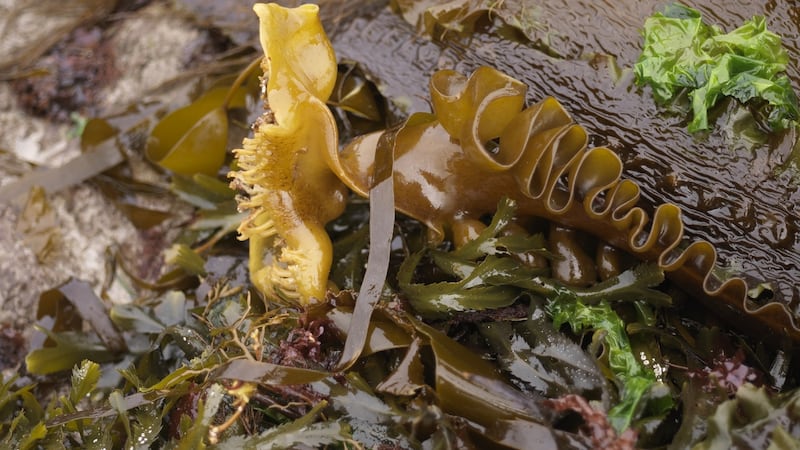It is at this time of year that I envy anyone who lives by the sea. But it’s not those wide-open skies, silvery dunes and briny, ice-cold waves that I long for. Instead it’s the seaweeds. Ask any gardener who has ever used these plant-like macroalgae as a mulch, soil conditioner or general all-round plant tonic, and they will vouch for their many miraculous properties.
It’s not only the famed ability of seaweed to add generous quantities of macro nutrients as well as trace elements to the soil that make it so highly prized amongst the green-fingered fraternity. Countless research papers show that its use benefits plants in a myriad of other ways. For example, it acts as a biostimulant, boosting everything from seed germination and root establishment to flowering, fruit set and crop yields. It also stimulates a plant’s natural defences, enabling it to fight off pests and diseases and tolerate less than ideal growing conditions, including drought and temperature extremes.
And get this. Not only can the use of seaweed in your garden increase the nutritional quality of any food that’s grown there, but it will also increase its shelf-life once harvested. As if all of that wasn’t enough reason for gardeners to treasure this family of macroalgae, might I also mention seaweed’s ability to restore flood-damaged gardens by repairing the soil structure, increasing its water-holding capacity and stimulating beneficial soil microbial activity – something of particular pertinence given the soggy winter we’ve just endured.


Driftweed
Even a few sacks of driftweed freshly gathered from the seashore will make a huge difference to your garden at this time of year, especially if you plan on growing potatoes. On fallow land, you could use it as part of the traditional lazybed technique once widely practised in the west of Ireland.
On recently cultivated ground, simply dig a trench and blanket the base of it with a layer of seaweed before placing the seed potatoes directly on top of it and backfilling with soil. Don’t bother rinsing it; despite some gardeners’ concerns about its possible high salt content, there’s no need (in fact, many experienced organic growers say that doing so may undermine its many benefits). Fresh seaweed also makes an excellent general mulch or a great addition to the compost heap, while you can use it to make a fantastic liquid plant feed for free.
The only problem with this, of course, is that not all of us live by the sea. And even for those lucky enough to do so, it’s worth pointing out that seaweed should always be collected from unpolluted beaches in an environmentally sustainable way with a good understanding of sustainable harvesting techniques and turbary rights, plus a respect for local bylaws. Living seaweed aside (never tug this from the rocks), even driftweed or “cast seaweed” washed up as debris on the shoreline can play an important role in providing food or habitats for other species, as well as helping to prevent coastal erosion by helping with sand dune development. So, only gather driftweed that has washed up above the high tideline (unless you have turbary rights or a licence to harvest), and try not to be greedy.
The good news for landlubbers like myself is that there are other ways for us to get our hands on some of that special seaweed magic, either by using it as a liquid extract or in various powdered forms, with many of the best brands manufactured right here in Ireland. Fruithill Farm in Co Cork (fruithillfarm. com), for example, supplies a range that’s free from preservatives and approved for organic use.
Called “Health-Sea”, it’s made by Tralee-based BioAtlantis. Admittedly, none of these shop-bought products are quite as powerful in their effects as the fresh stuff, but they’ll still be hugely beneficial to soil and plant health.
Liquid extract
One of the great benefits of liquid seaweed extract, for example, is that it can be easily diluted in water and used as a foliar spray. In this case the various nutrients are absorbed through the leaves, with especially quick results: I’ve lost count of the amount of blight-ridden box hedging I’ve seen nursed back to good health as a result of its regular use.
Used as a liquid feed to water root systems, it’s also an excellent way of improving the yields of food crops such as strawberries, potatoes and tomatoes. Of the dried or powdered forms, calcified seaweed (also known as “maerl”) is the one that gardeners traditionally used to sweeten (slightly raise the pH) of the soil. But as this is a form of crushed coral, environmental concerns mean that it’s not approved for organic use, while it’s also expensive and hard to come by.
Organically acceptable dry forms include seaweed dust or seaweed meal (dried and crushed fresh seaweed). Either type can be used as a general soil tonic (but the dust is cheaper) by digging them into the ground, adding them as a top dressing, or sprinkling them over the compost heap. Plants are not the only beneficiaries: earthworms and beneficial soil micro-organisms that live in your garden will be very grateful too.












